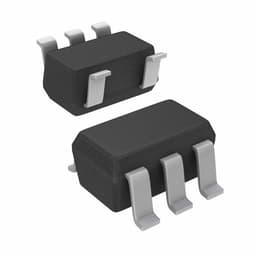
In today’s hyper-connected world, the demand for electronic components continues to surge as industries integrate advanced technologies into their operations. From smartphones and tablets to sophisticated industrial machines and electric vehicles, electronic components serve as the backbone of modern technology. However, the process of sourcing these essential components has undergone significant transformation over the years, particularly in the semiconductor industry. In this blog post, we will explore the evolution of sourcing electronic components, the challenges faced by businesses, and the strategies for efficient sourcing in a rapidly changing landscape.
The Landscape of Electronic Components
Electronic components, such as semiconductors, resistors, capacitors, and integrated circuits (ICs), play a crucial role in almost every electronic device we use. The semiconductor industry, in particular, is a driving force behind the innovation of electronic components, facilitating advancements in various sectors, including telecommunications, automotive, healthcare, and consumer electronics. As technology continues to evolve, the need for more efficient, reliable, and high-performance electronic components has never been more critical.
Historical Context
Historically, sourcing electronic components was a relatively straightforward process, characterized by direct relationships between manufacturers and suppliers. Companies would often rely on local suppliers to provide the necessary components for their products. However, as the demand for electronic devices skyrocketed in the late 20th century, the sourcing landscape began to change dramatically.
The globalization of the semiconductor industry has led to a complex supply chain, where components are sourced from various regions across the globe. This shift has brought about both opportunities and challenges. On one hand, companies can access a broader range of components and suppliers, potentially lowering costs and improving quality. On the other hand, this complexity has made sourcing electronic components more challenging, with factors such as geopolitical tensions, natural disasters, and trade regulations affecting supply chain stability.
Modern Challenges in Sourcing Electronic Components
As the semiconductor industry has evolved, several challenges have emerged that impact the sourcing of electronic components:
1. Supply Chain Disruptions: The COVID-19 pandemic has highlighted vulnerabilities in global supply chains, leading to shortages of critical components. Disruptions in manufacturing, transportation, and logistics have created significant delays, prompting companies to reevaluate their sourcing strategies.
2. Increased Demand: The rise of technologies such as 5G, artificial intelligence (AI), and the Internet of Things (IoT) has driven up demand for semiconductors and electronic components. As industries rapidly adopt these technologies, sourcing electronic components has become increasingly competitive.
3. Quality Control: As sourcing shifts to global suppliers, ensuring consistent quality across various components becomes a priority. Companies must implement rigorous quality control processes to mitigate the risks associated with sourcing from different manufacturers.
4. Regulatory Compliance: Navigating the complex web of regulations governing electronic components, including environmental and safety standards, can pose significant challenges. Companies need to stay informed about compliance requirements in different regions to avoid costly penalties.
5. Intellectual Property Concerns: With the increasing prevalence of counterfeiting and intellectual property theft, companies must remain vigilant in their sourcing practices. Protecting proprietary designs and ensuring that components are sourced from reputable suppliers is paramount.
Strategies for Effective Sourcing
To navigate the complexities of sourcing electronic components, companies can adopt several effective strategies:
1. Diversify Suppliers
One of the most effective ways to mitigate risks in sourcing electronic components is to diversify the supplier base. Relying on a single supplier for critical components can expose companies to significant risks in times of disruption. By establishing relationships with multiple suppliers across different regions, companies can enhance their resilience and flexibility in the face of unexpected challenges.
2. Leverage Technology
The rise of digital technologies has transformed how companies source electronic components. Platforms that connect manufacturers with suppliers have emerged, streamlining the sourcing process. By leveraging these digital tools, businesses can access real-time data on component availability, pricing, and lead times. Additionally, utilizing advanced analytics can help companies make informed decisions regarding their sourcing strategies.
3. Build Strong Relationships
Establishing strong relationships with suppliers is crucial for successful sourcing. Open communication and collaboration can lead to better understanding and alignment on quality expectations, lead times, and pricing. Building trust with suppliers can also result in better support during periods of disruption, as suppliers are more likely to prioritize partners they have strong relationships with.
4. Implement Quality Assurance Programs
Ensuring the quality of sourced electronic components is critical to maintaining product integrity. Companies should implement robust quality assurance programs that involve thorough inspections, testing, and validation of components. This can include establishing clear specifications, conducting supplier audits, and collaborating with suppliers to meet quality standards.
5. Stay Informed About Market Trends
Understanding market trends is essential for effective sourcing. Companies must stay informed about shifts in demand, emerging technologies, and regulatory changes that could impact their sourcing strategies. By actively monitoring the market landscape, businesses can adapt to changes and make proactive sourcing decisions.
6. Invest in Local Sourcing
In response to supply chain disruptions, many companies are reconsidering their sourcing strategies and exploring local sourcing options. By sourcing electronic components closer to manufacturing facilities, companies can reduce lead times and transportation costs while increasing supply chain resilience. Local suppliers may also be more attuned to regional regulatory requirements, simplifying compliance efforts.
Conclusion
The evolution of sourcing electronic components in the semiconductor industry has been shaped by a multitude of factors, from globalization and technological advancements to the challenges posed by supply chain disruptions. As businesses navigate this complex landscape, adopting effective sourcing strategies is essential for success. By diversifying suppliers, leveraging technology, building strong relationships, implementing quality assurance programs, staying informed about market trends, and considering local sourcing options, companies can enhance their sourcing capabilities and remain competitive in an ever-changing industry.
As we move forward, the importance of sourcing electronic components effectively will only continue to grow. By embracing innovation and adaptability, companies can secure the necessary components to drive their success in the rapidly evolving world of technology.







